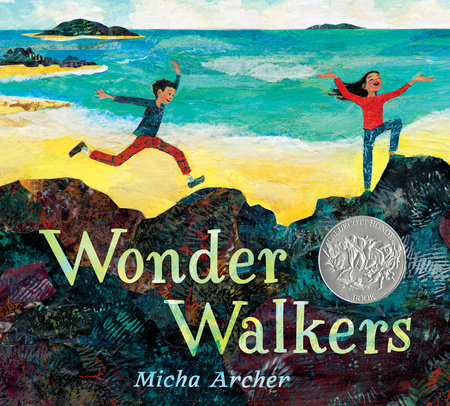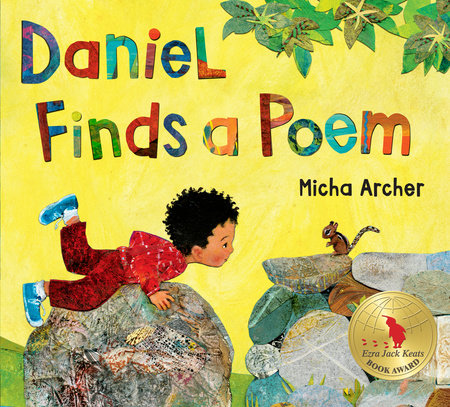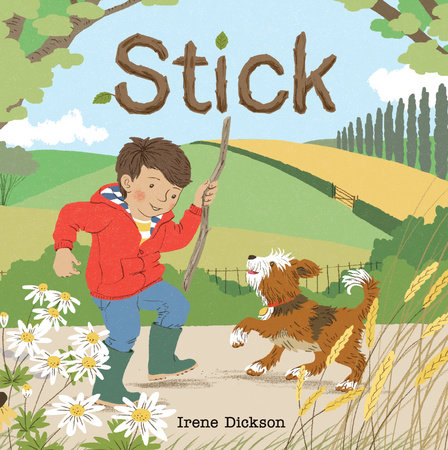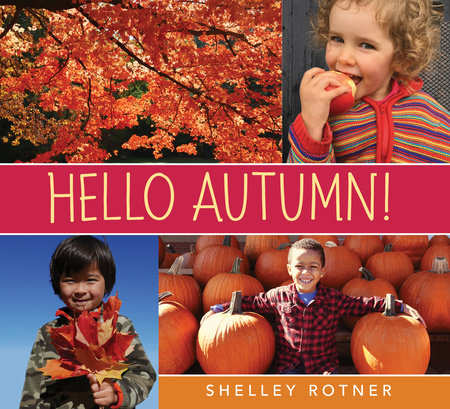Fresh Air Rules! Tips and Books for Taking Kids’ Learning Outdoors
by Lindsay Barrett
Outdoor learning, while definitely not new, received extra attention during the COVID-19 pandemic. But even as concerns about spreading illness and distancing restrictions wane, advocates for learning outside hope interest in the topic won’t. The benefits for kids’ and adults’ mental and physical health, learning, motivation, and morale are just too great to ignore! So if you’re curious about how to try out outdoor learning, even without lots of experience or a big budget, these educator-approved tips may help.
1. Assess possibilities and make your game plan.
An outdoor classroom definitely doesn’t need to be fancy to be a success. Once you’ve considered your options for a safe, large enough space, think through seating and weather protection. Materials like stumps, logs, rocks, or five-gallon buckets for seating and tarps or recycled sailcloth for shade are all inexpensive — or free. Plantings are great for defining spaces or blocking distracting views. For more inspiration, start with Green Schoolyards America’s Creating Outdoor Spaces resource library. Schools all over the world have made outdoor learning work, and you can too!
Outdoor classrooms don’t even need to be permanent set-ups. A small grant or donation request could cover an all-terrain collapsible wagon, class set of clipboards, folding easel, and some waterproof seating pads. Set up shop under a big tree in minutes.
2. Set boundaries upfront.
Guess what kids want to do when they get outdoors? Yep, have recess! Kids’ behavior and lack of attention is a huge concern about teaching outdoors for many educators. Have faith: kids respond to the same management tricks you use indoors. Talk about expectations—and potential distractions—before heading out. Do something active on your way to the outdoor space to expend some energy. Involve students in setting up for your lesson so they aren’t standing around waiting (and getting into trouble). It also helps denote an entrance, like a gate or arbor, or even just an entrance ritual to an outdoor learning space, to signify that you’ve stepped into a “classroom,” even if it’s one without walls.
3. Remember: Any learning can be outdoor learning.
Environmental learning is amazing — kids get so much from school gardening, studying organisms in their natural habitats, and collecting real weather data. But there are plenty of lessons that are a great fit for outdoors that have nothing to do with trees and bugs. A regular read-aloud, discussion, or writing workshop all get a boost when held in the fresh air. Mindfulness lessons take on new meaning outdoors, where there are plenty of authentic sensations, sounds, and smells to help kids practice being in the moment. Math activities can take up more space outside, from measuring objects and distances to using sidewalk chalk and big movements to solve problems or practice math facts. Partners working together can spread out and get loud. Special events, like poetry readings or presentations, are instantly more special when held outside.
4. Make it a routine.
Try to schedule learning time outside consistently. As with anything, the more you head outside, the more comfortable your students (and you!) will get with the process of getting out there and using time productively. (For all you winter weather teachers, think about how much easier putting on snow clothes feels in March than the first snowy day in December!)
Electronic sign-up tools like Sign-Up Genius or a Google Calendar make sharing outdoor spaces easier, with minimal set-up and maintenance. Plus, getting an automatic email reminder that it’s your class’s scheduled outdoor time never hurts.
Work with your climate rather than lament it. If you live somewhere hot, schedule an outdoor morning meeting before the sun heats up. If it’s a chilly day, wait until early afternoon to head out to a sunny spot. (Also, if you’re heading outdoors often, you’ll get to know what kids need to be comfortable. Then, you can advocate to make sure they have it. If your kiddos don’t have water bottles from home, contact a local business and see if they’ll donate a class set of branded canteens. If rainy season is coming and students don’t have boots, write a grant, put in a donation request with a local nonprofit, or collect a big batch of hand-me-downs.)
The bottom line — most educators report that the more outdoor learning you do, the better it gets.
-
Books to Inspire Your Class to Get Outside:
-
The Camping Trip
Buy from:You (probably) won’t be taking your class on a full-scale camping trip, but this personal narrative about one city girl’s first campout is a great jumping-off point for discussing acclimating to outdoor learning. The experiences Ernestine has, from making a list of what she’ll need and gathering supplies, to overcoming fear and discomfort when trying new things, to finding wonder and growing an appreciation for nature, all apply to taking school outside, too!
Buy from: -
Wonder Walkers
Buy from:Keeping it simple is usually the best approach for outdoor learning. “Wonder walks,” as described in this inviting read-aloud, could be an easy go-to lesson to put on repeat. The two curious kids walk and pose questions about everything they see, hear, and feel, from the sun to the dirt to the wind. Take a “wonder walk” with students and use their questions as context for meaningful writing and research work.
Buy from: -
Daniel Finds a Poem
Buy from:Micha Archer offers teachers another ready-made lesson with this introduction to using nature to evoke poetry. Each day of the week, Daniel explores outdoors and notes poetic sights and sounds, like the arrangement of stones in a wall or the warmth of the sun on a patch of sand. By the end of the week, he has a poem!
Buy from: -
Stick
Buy from:A boy and his dog find a stick, and it’s all they need for a fun-filled day of games and creativity. Kids are naturally inclined to find and collect objects outdoors. So, make it work for your lesson, and let them! Draw or write in the dirt for math activity recording, collect nature items for props to act out a concept, or use them as writing inspiration. The possibilities of a stick — or a rock, leaf, or flower — are pretty much endless.
Buy from: -
Hello Seasons! Series
Buy from:Observing seasonal changes is one of the easiest and most powerful outdoor learning activities, whether your school is urban, rural, or anywhere in between. This collection of photo essays celebrating spring, autumn, summer, and winter highlights the simple things that define each season. Consider purchasing a few disposable cameras and letting your students loose to take their own photos and create copycat versions for each season in your location.
Buy from:





